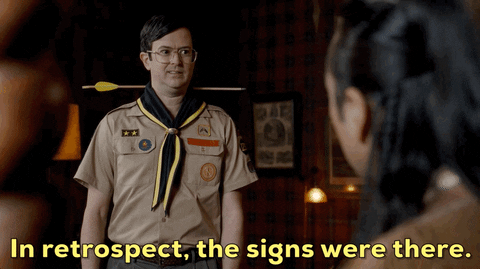😓 Did you just lose a customer?
Losing a customer feels awful. As Customer Success Managers (CSMs), it can feel like we’ve failed.
But it happens.
What’s important is to learn why we lost the customer.
To understand what happened, you need to run a customer retrospective.
💡 Why Run a Customer Retrospective
Learning Opportunity
Retrospectives provide an opportunity to learn from both successes and failures. Analyzing what went well and what didn't can help the team identify patterns, avoid repeating mistakes, and replicate successful strategies in the future. They offer a structured way to identify areas that need improvement.
Team Collaboration
Retrospectives encourage open communication and collaboration within the team. Team members can share their perspectives, insights, and concerns, fostering a sense of shared responsibility in a blame-free setting.Enhanced Customer Relationships
Analyzing incidents can help the team better understand customer needs and preferences. This understanding can lead to more effective strategies for building and maintaining strong customer relationships.
🔍 12 Steps to Run an Effective Customer Retrospective
Define the Purpose
Clearly define the purpose of the retrospective. Is it to analyze a specific incident, identify areas for improvement, or celebrate a success? Understanding the goal will guide the discussion.Select Participants and Facilitator
Invite team members who were directly involved in the incident or who can provide valuable insights. Include cross-functional team members if necessary. Select one person to facilitate the retrospective. This person will serve as a referee and ensure the discussion stays on track.Set the Stage
Create a safe and open environment for the retrospective. Emphasize the importance of constructive feedback and a blame-free atmosphere.Gather Data
Collect relevant data and information related to the incident. This may include customer feedback, communication records, and performance metrics. Gather as much of the data as possible before the discussion.Review the Incident
Begin by revisiting the incident, ensuring that all participants have a shared understanding of what occurred. Encourage team members to share their perspectives and experiences. Re-emphasize that this is a blame-free discussion.Identify What Went Well
Discuss and document the aspects of the incident that went well. Recognize and celebrate successes or positive outcomes.Identify Areas for Improvement
Explore the challenges, issues, or shortcomings of the incident. Were there signs leading up to the incident?Generate Action Items
Collaboratively brainstorm action items to address the identified areas for improvement. Ensure that action items are specific, measurable, achievable, relevant, and time-bound (SMART). Collectively vote on a maximum of 1-3 action items.Assign Ownership
Assign responsibilities for each action item to team members or stakeholders. Clearly define one owner for each item.Follow-Up
Set a clear timeline for implementing the action items and schedule follow-up meetings to track progress and assess the impact of the changes made.Document and Share
Document the retrospective findings, action items, and responsibilities. Share the outcomes with the team and relevant stakeholders.Repeat Regularly
Schedule regular retrospectives as part of the team's ongoing improvement process. Consider conducting them after significant customer incidents, successes, or at regular intervals.
The tl;dr
Losing a customer is never easy. By conducting retrospectives after customer incidents, CS teams can better understand what’s working and what’s not to help prevent future churn.
❓Does your team run customer retrospectives? Comment below or reach out directly on LinkedIn.





